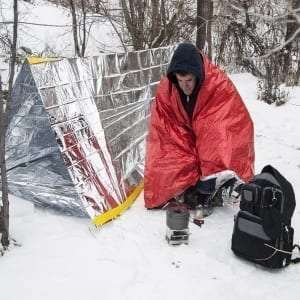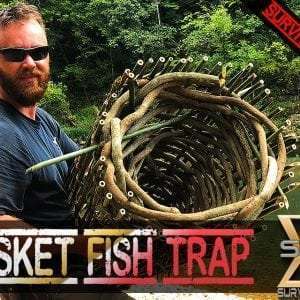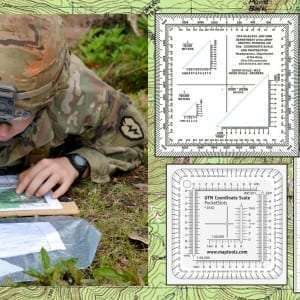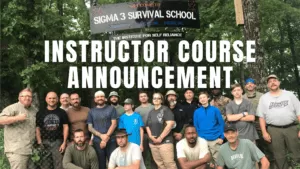Do you know the four levels of shelter? The topic of emergency survival shelter is an essential discussion in outdoor survival. It also is one of the core essentials for any survival planning, along with food, water, and fire. The Fall season is here. Camping, backpacking, hiking, and hunting are the activities winding down before the first winter snows begin to blanket the North American continent. However, before the snows come, there are the fall rains to contend with outdoors. Thus, shelter is an essential area to address for your end-of-the-year wilderness adventure.
1. Level 1: Personal Clothing
Most survival experts agree that the clothing you wear is your first level of shelter consideration. As such, it is essential to understand how your decisions about apparel can help you or endanger you in the outdoors. The principle of layering outerwear is useful when deciding what to pack and what to leave behind. A modified version of layering can look like the following:
- 1st Layer: Underwear, Socks and Silk-Weight Base Layers
- 2nd Layer: Mid-Weight Base Layers
- 3rd Layer: Shirt, Trousers, Shoes, Boots
- 4th Layer: Insulation Items (Sweaters or Fleece Liners)
The kinds of items that represent this layer would be the Polartec® Classic 300 Fleece Parka Jacket Liner or the Smartwool® ¼ Zip Pullover – Merino 150 Wool Sweater. - 5th Layer: Softshell/Wind Breaker Layers (60°F to 46°F)
An example of clothing that falls into this category would be the or 5.11 Packable Operator Jacket. - 6th Layer: Wet Weather Outerwear (Jackets, Trousers, Ponchos, Muck Boots, Over Boots)
- 7th Layer: Moderate Cold Weather Outerwear (45°F to 32°F)
A representative of this layer is the U.S. Army M-65 Field Jacket and Field Pants with Liners and the Condor® Summit Softshell Jacket. - 8th Layer: Extreme Cold Weather Outerwear (31°F to -40°F). The TruSpec® H2O Proof Gen 2 Parka falls into this category
The principle of layering is essential to controlling your body’s loss of heat while in the fall and winter seasons. Equally important are the kinds of materials that you consider for your personal clothing needs. There is much debate about natural fiber versus synthetic fiber clothing. Each type of material has its benefits and disadvantages. Therefore, it is best to do some research and see which kinds of clothing materials work best for you and in the environment that you will traverse.
2. Level 2: Hasty Shelters
The next level of shelter consideration is what I call, hasty shelters. These kinds of shelters are not meant to be a permanent solution. They are often associated with emergency outdoor survival or military escape-and-evasion techniques. They are temporary solutions to avoiding extended exposure to the elements, such as wind, rain, snow, or heat. Moreover, they can be a source of concealment in a military context. Examples of hasty shelters are caves, overhangs, lean-tos, debris huts, wickiups, various kinds of tarp shelters, tents, or portable hunting blinds. Furthermore, some hasty shelters can be a solution for several days to several weeks.
Generally, hasty shelters are formed from the available natural resources along with the shelter items that you are carrying and the tools you have in your pack. Some areas that you may be in will not provide much for sheltering material. Therefore, what you are carrying in your backpack may save your life and prevent you from getting hypothermia or even frostbite. It is advisable to bring an SOL Escape Lite or Escape Pro Bivy and a U.S. Army GoreTex Bivy Cover as a minimal emergency hasty shelter system.
3. Level 3: Semi-Permanent
The third level of shelter is those that are semi-permanent. Semi-permanent shelters take more time and energy to construct. Therefore, they are not the best solution to consider when you are lost in the woods. However, if you find one already built, this kind of shelter will enhance your chances of survival over an extended period. The main difference between semi-permanent and permanent shelters is the foundation. Most permanent shelters are built upon and anchored to a rock, brick, concrete block, or slab foundation. By contrast, some examples of semi-permanent shelters would be log cabins, trail shelters, sheds, or mobile homes. Semi-permanent shelters can be elevated off of the ground by sitting on concrete blocks, yet they are not permanently affixed to them.
4. Level 4: Permanent
Permanent shelters are the final level or category of shelters to consider as you are planning your fall outdoor adventure. If you are lost in the wilderness, you are not going to spend your energies constructing a permanent shelter to get out of the elements. However, one can potentially run across a permanent shelter while attempting to self-recover in an emergency survival situation. One survival personality once stumbled across a permanent shelter while trekking through the jungles of Costa Rica. Thus, it is possible to happen upon such an accommodation. As stated earlier, permanent shelters are built upon and anchored to a rock, brick, or concrete foundation. Suburban and Urban shelters are mostly permanent shelters. In the outdoors, sometimes a person’s weekend cottage or mountain home may be hidden away until a lost person discovers them.
Permanent shelters offer a longer-term solution to your shelter needs. They usually have central air and heating. There is often running water, food, and cooking implements to access. Therefore, it is best to have a working idea of what permanent shelters may exist in a ten to a twenty-mile radius of your operating area or hiking trail. For example, when I was in Virginia, I would hike a well-used trail system. I could hear in the distance the sounds of human activity.
Final Thoughts
Fall-time outdoor activities can be fun and memorable. However, this time of the year can also be fraught with its unique hazards. Therefore, you must take the time to think through the shelter requirements necessary to be safe while outdoors. Weather at this time of the year can change quickly. One story of a missing hunter that I read recently centered on his being caught in a sudden snowstorm in the mountains of Idaho in October. Therefore, you must have a good clothing plan and shelter plan before you head out for outdoor activity during this time of the year.
This post may contain affiliate links which means I may receive a commission from purchases made through the links. I only recommend products I personally use and love, so if you support what we are doing, thanks for clicking.










